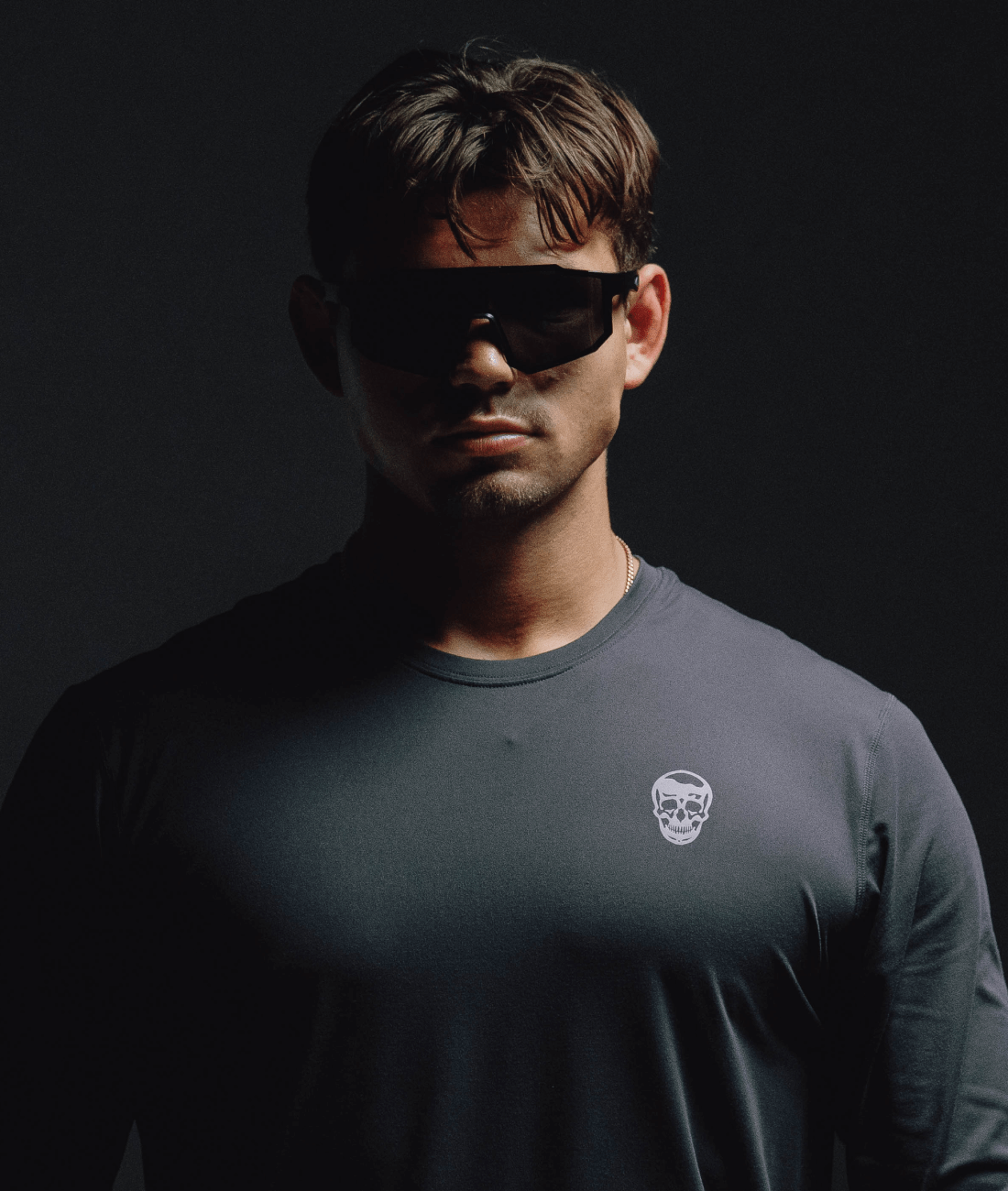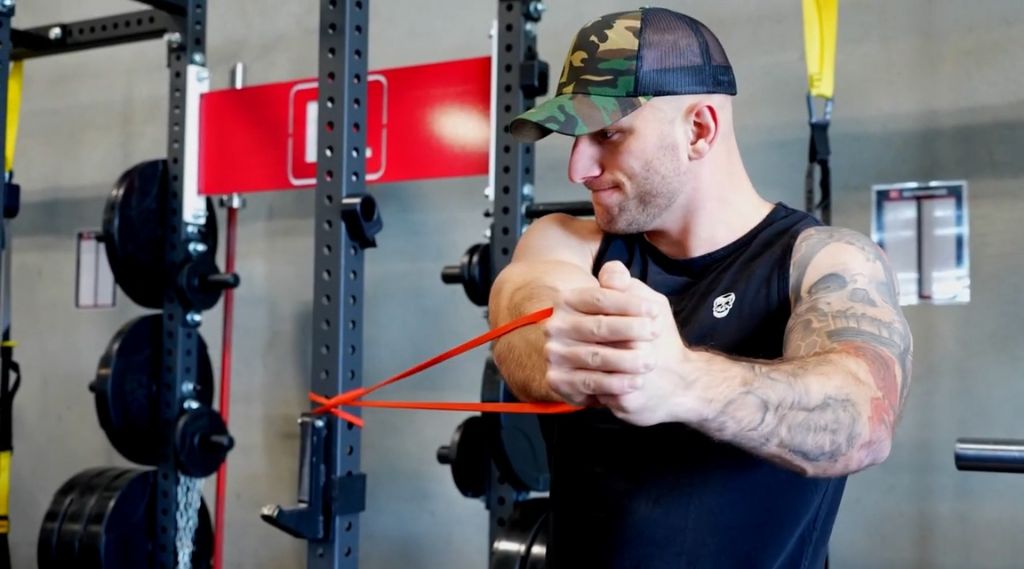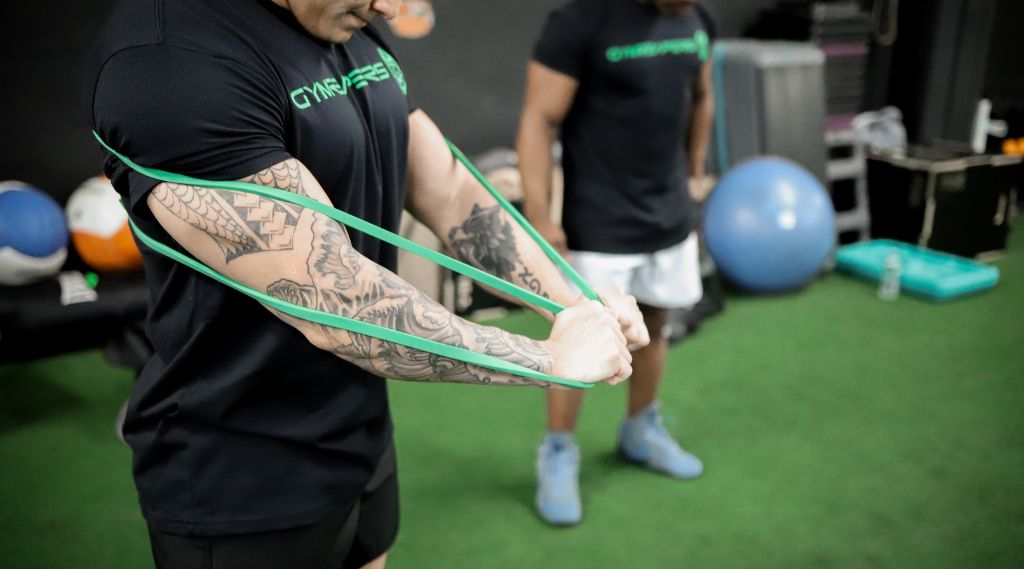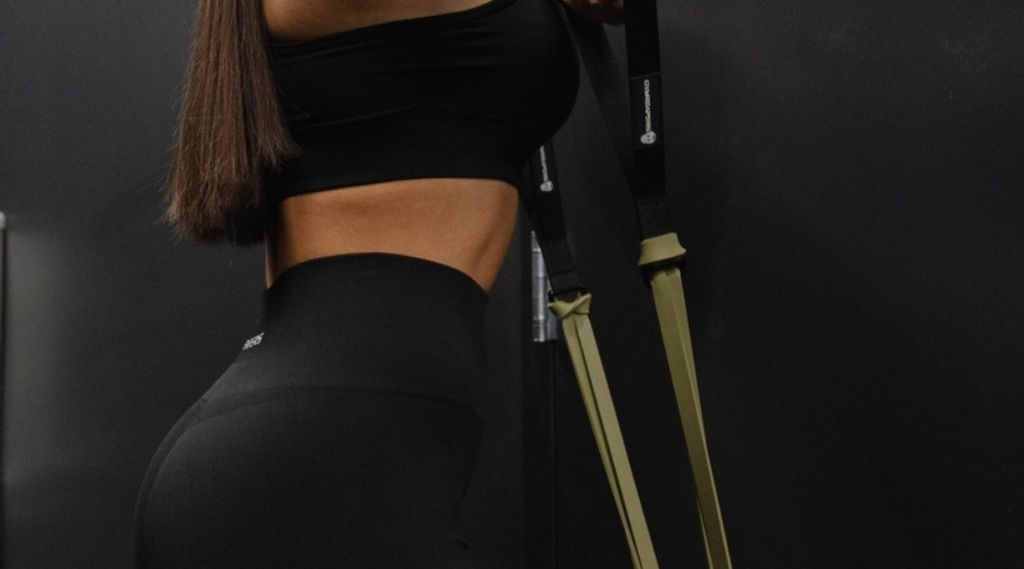If you’re looking to take your core training to the next level to improve your stability, get stronger in compound movements, or build a great physique, then incorporating bands into your workout routine is the way to go.
Some of the best resistance band core exercises include pallof presses, banded plank rows, lying knee tucks, and banded dead bugs. Adding these exercises into your training will lead to greater development of the 4 major muscles that make up your core.
To make sure that you are getting the most out of your core training, I will share 10 of the best banded exercises to grow and develop your core, teach you how to perform the movements properly, and give you a sample workout that you can start implementing today.
Key Takeaways
Anatomy of the Core Muscles

Your core is a dominant group of muscles in your body that is constantly being utilized in all daily activities and the majority of your training.
Your core is a group of four muscles that are layered on top of one another. These muscles are the transverse abdominis (the deepest layer), internal oblique, external oblique, and rectus abdominis (the most superficial layer).
Having a strong core is so much more than having a six-pack. They help you maintain balance, brace in compound movements, and keep the rest of your body healthy and properly aligned.
Transverse Abdominis
Your transverse abdominis is the deepest layer of all your core muscles, and it plays a crucial role in supporting and stabilizing your spine.
The transverse abdominis wraps around your spine like a cylinder, and it helps keep your organs in place.
Whenever you hear about people breathing deeply and bracing their core for a squat or deadlift, they are talking about activating their transverse abdominis.
This means that this muscle group is mainly trained by doing static, stability-type movements that require you to brace your torso to resist unwanted motion.
Examples of exercises that target your TA are static banded dead bugs, or a pallof press (which I’ll explain later).
Internal Oblique
Your internal oblique is layered on top of the transverse abdominis, and below your external oblique.
It works in tandem with your external oblique to help you bend forwards, and it also helps your body to rotate sideways and bend sideways.
Your internal obliques are not typically visible from the outside, but they are targeted with exercises that involve rotation and bending.
Examples of those exercises are side plank rows and banded russian twists.
External Oblique
Your external oblique is layered on top of the internal oblique, and is below the rectus abdominis.
This muscle shares the same functions as the internal oblique, with the major difference being the direction of the muscle fibers.
Your internal oblique runs upward from your pelvis to your ribs, and your external obliques run in the opposite direction (more like putting your hands in your pockets).
When you are training your external obliques, you are also training your internal obliques; however, due to the difference in the direction of the muscle fibers, certain exercises do work your external obliques more efficiently.
An example of an exercise that targets the external obliques is the cable woodchoppers.
Rectus Abdominis
Finally, your rectus abdominis make up the top layer of your core muscles.
These are more commonly referred to as the “six-pack” muscles, and they help stabilize and flex your trunk.
Your rectus abdominis helps you bend forward, lift your hips, and stabilize movement throughout your body while doing a variety of movements.
Your rectus abdominis can be trained with a variety of traditional core movements.
A few examples of ones we will discuss are banded sit-ups, banded lying knee tucks, and banded mountain climbers.
Benefits of Training the Core With Bands

1) Greater muscle contractions. One of the best benefits of any resistance band training is that bands offer more resistance as they stretch out, which creates a strength curve with band exercises that we don’t experience with free weights or cables. This is known as linear variable resistance (LVR). This means that the portions of your exercise where the band is more stretched will be harder. This can create an extra degree of difficulty and complexity to basic core exercises. For example, regular sit-ups may be too easy for you, but you’ll be surprised at how much harder the top portion of the exercise is with a band pulling against you. For example, it is incredibly hard to effectively train your transverse abdominis. This muscle gets the most stimulus from static movements like planks, so throwing in some banded stability work with banded dead bugs, pallof presses, and plank rows is a great way to challenge your muscles’ ability to stabilize your core as you move. Pallof presses are a great way to target your transverse abdominis. They help reinforce pelvic alignment, teach you how to brace your core in an upright position, and are a great way to learn how to avoid unwanted torso twisting while also reinforcing scapula control and stability. Pro tip: I typically perform this movement standing in an athletic position (slight bend in the knees, upright torso, feet shoulder-width and parallel) but you can also do a pallof press in a half-kneeling position. This will help you get better at unilateral movements like lunges and split squats. Dead bugs are a staple core exercise that reinforces deep breathing, core strength, spinal alignment, and coordination of your hips and glutes with your core. Adding a static band hold to this movement helps activate your obliques, transverse abdominis, and stabilizing muscles. This is a great exercise for people that experience drastic hip shifts when squatting. Pro tip: If you want to put more emphasis on your obliques, set up perpendicular to your anchor point so that the band is pulling across your body instead of straight back over your head. Banded plank rows are a great way to spice up a classic isometric exercise (when your muscles contract without changing position). Adding a band continues to help develop the isometric core strength that a regular plank trains, but will also help develop more dynamic strength and control. Pro tip: focus more on the control and core contraction here than the weight of the band. Going too heavy will turn this exercise into a back and bicep training session when you are really trying to work your core. This exercise is another plank variation that can help increase oblique strength and reinforce pelvic alignment. Adding the banded row gives the same type of advantages we see above with the standard plank row but with the side plank position providing more emphasis on the obliques. Pro tip: if you feel unstable and wobbly, focus on driving your elbow through the floor to create more tension and coordinate your breath with your movement. Try exhaling as you row the band toward you and inhaling as you return to the start position. This is a great rotational core exercise that can be done from a variety of angles to develop a wide range of rotational core strength. Woodchoppers mainly focus on your internal and external obliques, but will also help you develop better balance and stability. Pro tip: for maximum development of your core muscles, do 3 variations of the woodchop. Go from middle to middle (with the band set up at chest level), from high to low (described above), and from low to high (low anchor point and finish above your shoulder). This is another great rotational exercise and an awesome twist (hah) on a classic oblique exercise. Adding the band to your Russian twists is a great way to increase the difficulty of the movement and add greater tension on the obliques to rotate against. Pro tip: keep your arms straight and rotate mainly with your trunk. To increase the tension, set up further away from the anchor point. To decrease tension, set up closer to the anchor point. Banded sit-ups are a great variation of a traditional crunching movement. This will have you perform a sit-up while the band is trying to pull you backward, which is a great way to target your rectus abdominis and feel a greater contraction at the top of the rep. Pro tip: if you want to really feel the burn, pause your situp halfway to the top. While doing this, you should feel your abs actively contracting and fighting against both the band and gravity, which want to pull your shoulders back down to the floor. The lying knee tuck is a classic exercise to target the lower portion of your rectus abdominis. Adding a resistance band increases the tension against your abs and hip flexors, and will result in a better squeeze at the top of the movement. Pro tip: do not allow your lower back to arch. Instead, focus on pushing it into the floor as your feet move out and pull the band in. This cable-crunch lookalike is a great alternative when you don’t have access to cables. All you need for this cable alternative is a band and a high point to anchor it. Pro tip: be sure not to let your lower back go into full extension (arching) at the top. Instead, focus on keeping your core engaged throughout the entire movement. This exercise is great for targeting your serratus anterior, which is a lesser-known portion of your core that can also be lumped in with your lower chest. Your serratus muscle is located near your ribs, above your obliques, and often looks like the gills of a fish when an athlete is particularly shredded. The classic dumbbell pullover has long been used for torso gains, and in my opinion, the banded pullover levels up the intensity and tension that this classic exercise can give. Pro tip: Do not try and move too quickly in this exercise. Keeping a slow, steady, and controlled pace will ensure you activate your core and lower chest. Now that you’re familiar with the best banded core exercises, it’s time to combine them into a program, Here is an effective resistance band core routine that you can do with some of the above exercises: Exercise Sets Reps Rest Notes Kneeling Band Crunches 4 15-20 90 seconds Squeeze elbows to knees at the bottom of every rep Banded Lying Knee Tucks 3-4 10-12 60-90 seconds Squeeze your core to get your tailbone off the ground at the top of every rep. Dead Bugs with Static Band Hold 3 8 per leg 60-90 seconds Don’t allow the band to move from above your chest. Banded Russian Twists 2 10-12 per side 60 seconds After your second set, drop the band and do a burnout bodyweight set. Banded Pallof Press 2 15-20 90 seconds Do these slow and controlled. Do not allow your trunk to rotate, and pause at full extension of every rep. Note that I did not include all 10 exercises. This is because some of them are very similar and target the core in a similar manner. It would be redundant to perform all of them on the same day, and they are better viewed as options that you can swap in and out depending on your training preferences. When looking to incorporate banded exercises into your core training, I highly recommend purchasing multiple bands so that you have different levels of resistance to choose from. This will be the best way to make sure you are properly equipped as you get stronger, and allow you to perform a variety of movements that require different levels of resistance. The Gymreapers Military Resistance Band Set is a great full set of resistance bands. The set comes with bands that range in resistance from 20-150 lbs to satisfy every need possible for adding banded training exercises into your program.
Here are five reasons why you should incorporate bands into your core training:
2) More resistant to injury. One of the best ways to prevent injuries when doing heavy compound movements (like squats and deadlifts) is to have a very strong core. Resistance band core exercises develop all layers of your core muscles and can help create better stability so that you can generate force in safer positions.
3) Improved unilateral and dynamic performance. Many of the core exercises that I will discuss below are great for developing unilateral strength (strength on both sides of your body). This can help prevent imbalances, ensure that both sides of your body are working properly, and will help you with any sports performance goals you may want to achieve.
4) Adds exercise variety and encourages progression. For more experienced gym goers, simple core movements can get boring and progress is difficult to track. Banded core exercises are a great way to spice up mundane movements, and the bands themselves offer great opportunities for progressive overload to encourage progress over time.
10 Best Core Exercises With Bands
1. Pallof Presses
How To:
2. Dead Bug with Static Band Holds
How To:
3. Plank Band Rows
How To:
4. Side Plank Band Rows
How To:
5. Banded Woodchoppers
How To:
6. Banded Russian Twists
How To:
7. Banded Sit Ups
How To:
8. Banded Lying Knee Tucks
How To:
9. Kneeling Band Crunches
How To:
10. Banded Pullovers
How To
Sample Core Workout Routine With Bands
Best Bands For Training Your Core













Leave a comment
All comments are moderated before being published.
This site is protected by hCaptcha and the hCaptcha Privacy Policy and Terms of Service apply.